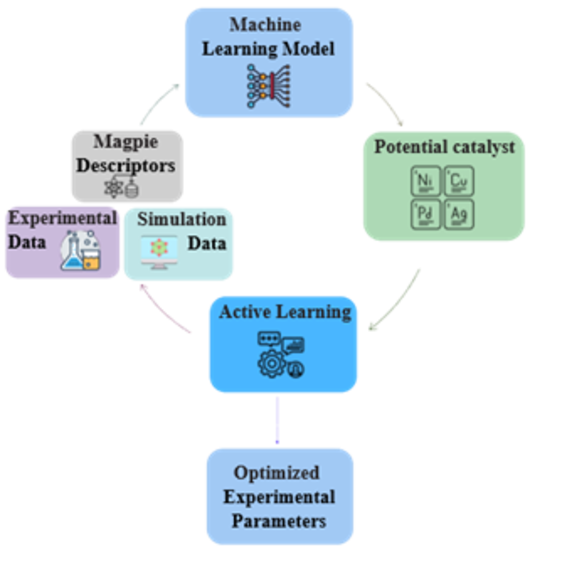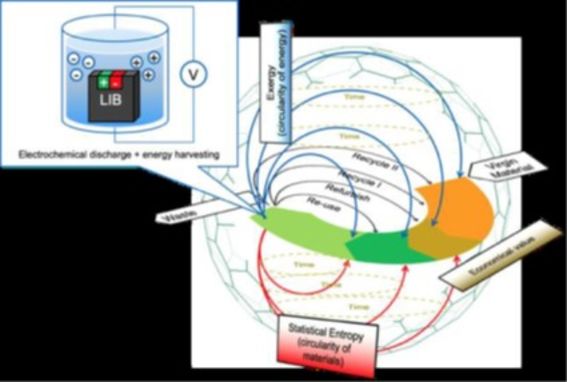Energy storage systems and materials

Power to X AIcon (AI-guided CO2 conversion) is an Academy of Finland project led by Prof. Annukka Santasalo-Aarnio in collaboration with Prof. Patrick Rinke’s CEST group the School of Science. In this project we apply a data-driven approach to discover novel catalyst and processes for key CO2 utilization technologies, most notably the hydrogenation of CO2 to methanol. Instead of trial and error, we use a machine learning model trained and updated with literature and in-house experimental data to find improved catalysts, and promising candidates are further optimized using an active learning-based experimental design approach. With this approach, we can accelerate catalyst and process discovery, ultimately pushing CO2 utilization closer to commercial viability. In addition to the lab-scale research of AIcon, we also study the techno-economic and social aspects of CO2-based methanol synthesis.
Contacts: Assistant professor Annukka Santasalo-Aarnio (annukka.santasalo@aalto.fi), Project specialist Dr. Arpad Toldy (arpad.toldy@aalto.fi)

Circular design of energy systems
To ensure that the materials in used for the green energy transition are recoverable and therefore can be considered sustainable, we have two projects on circular design of energy systems. Hyper-sphere is an Academy of Finland project in collaboration with Prof. Rodrigo Serna at the School of Chemical Engineering. In this project, we develop new methods for processing end of life batteries that enable efficient energy and metal recovery. To support this work, our research group is also part of the Nordic5Tec battery network where we have an additional PhD student working with energy harvesting from end-of-life batteries. Additionally, we have another Academy of Finland project ECOSOL where the same eco-design principles are applied to solar cells.
Contacts: Assistant professor Annukka Santasalo-Aarnio (annukka.santsalo-aarnio@aalto.fi ), Post-doctoral researcher Neha Garg (neha.garg@aalto.fi )

Thermal energy storage materials
Thermal storage materials research consists of three different material groups, each with different storage methodology.
(i) Thermochemical storage material research focuses on development and modifications of high energy density sorption salts. Substantial amount of heat can be released when water vapor adsorbs into these salts. With this method thermal energy can be stored in principle forever.
Contacts: Senior scientist Ari Seppälä (ari.seppala@aalto.fi), Academy post-doc researcher Roza Yazdani (roza.yazdani@aalto.fi)
(ii) Cold-crystallization of materials can be exploited for storing heat for several months at cold temperatures. The phenomenon is based on materials of which melt phase can supercool substantially and crystallize by heating. We focus on developing sugar alcohols cross-linked with polymers and testing the new materials in a prototype system.
Contact: Senior scientist Ari Seppälä (ari.seppala@aalto.fi), Laboratory manager Konsta Turunen (konsta.turunen@aalto.fi)
(iii) Materials for thermal regulation combine the properties of insulation materials and phase change materials. These materials can be exploited, e.g., for keeping different products near constant temperature during transportation.
Contact: Academy post-doc researcher Roza Yazdani (roza.yazdani@aalto.fi)






